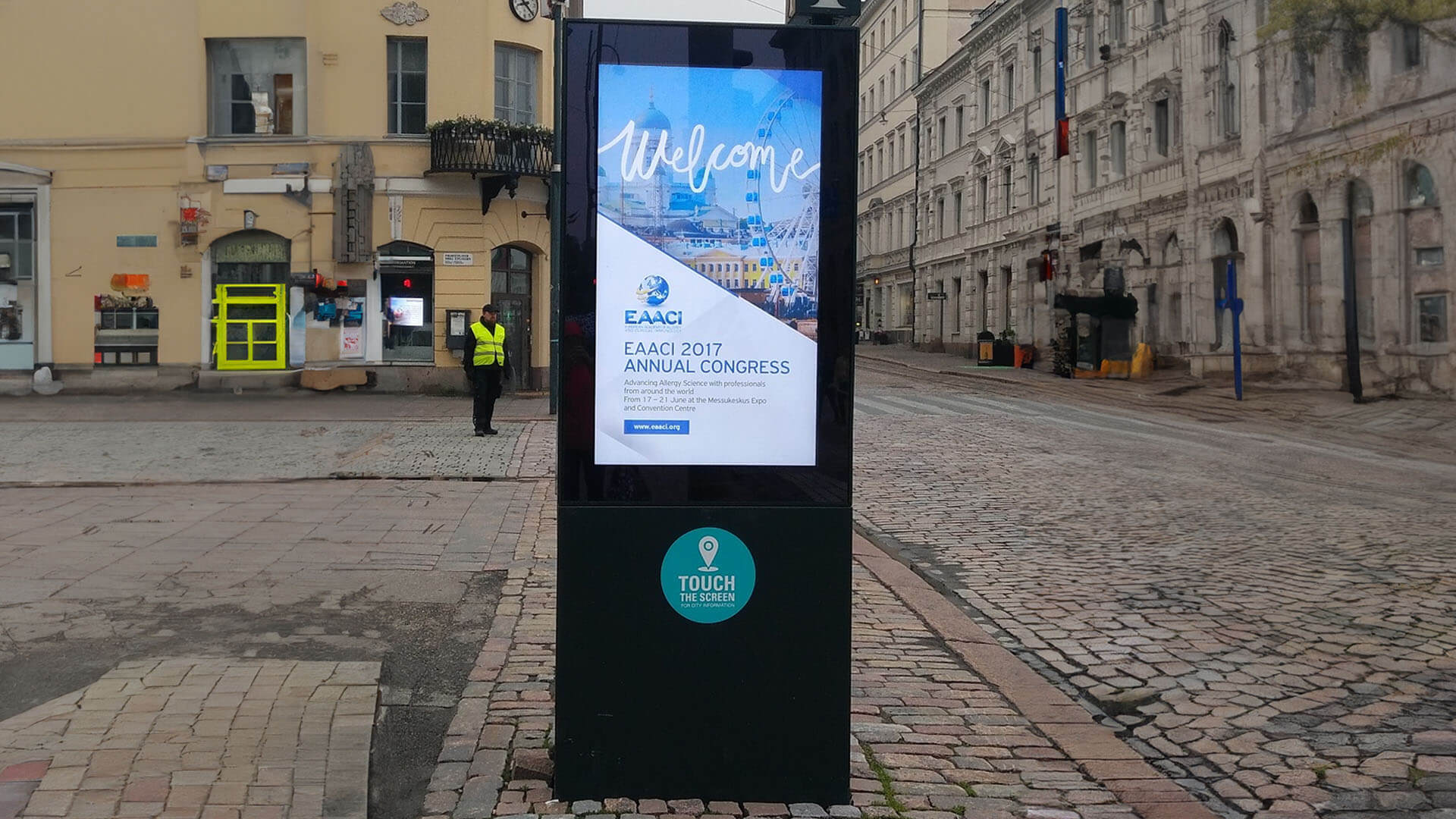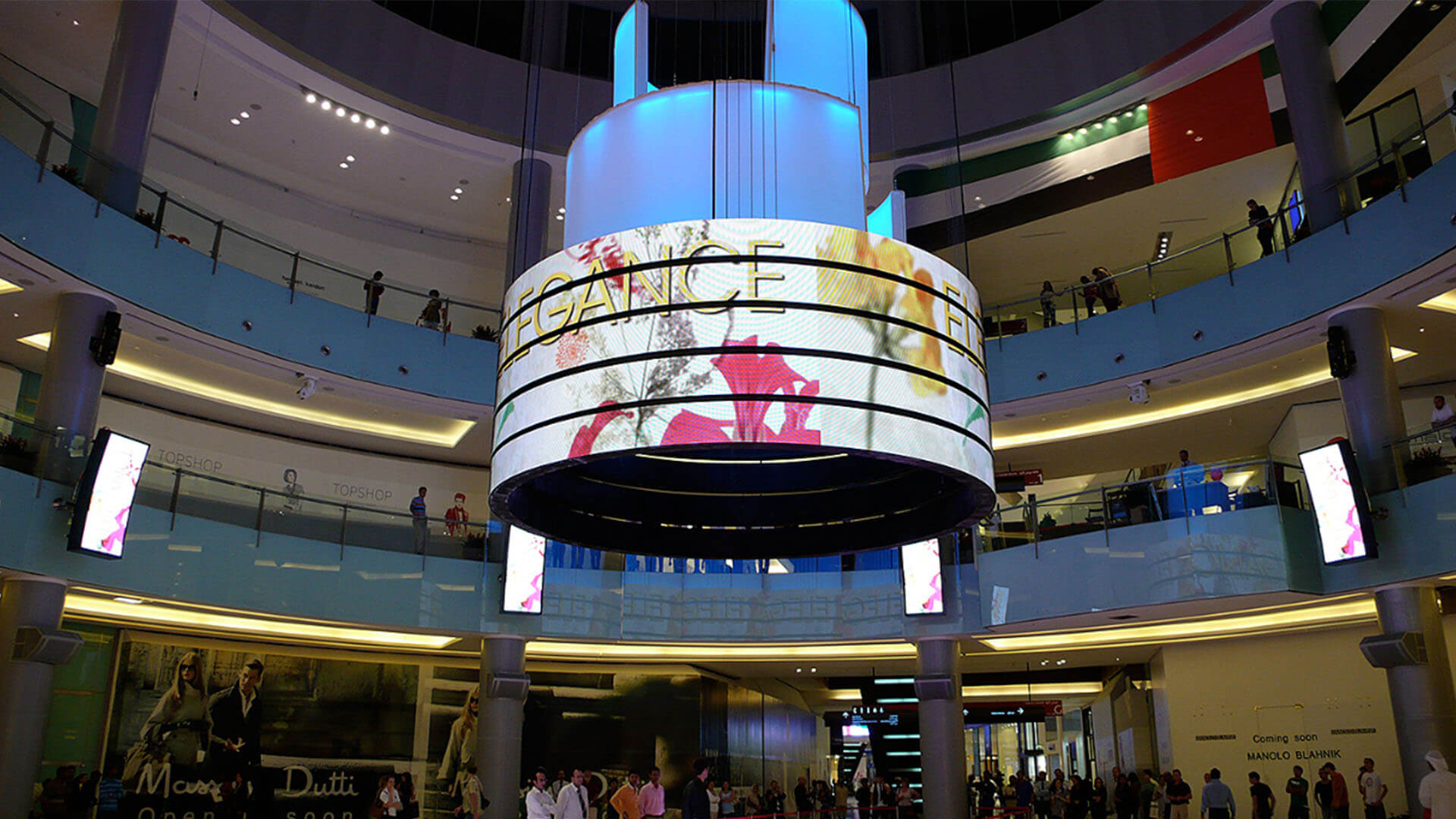
Oct 1 2023
7 min read


Nov
Picture this. You walk into an ancient cathedral known for its captivating gothic interiors. You are looking for a beyond-artsy experience, but what catches your attention first is a huge screen, alive with vibrant graphics and a brief history of the place. Digital signs, in this case, play a pivotal role in enhancing visitors’ experience. And this blog will exactly take you through that. From understanding the transformative impact of signage technology on tourist destinations to understanding how it helps in immersive storytelling, there is much on offer.
Signage in tourism refers to using indicative electronic gestures to communicate information to visitors in a way that guides, directs, informs, and brings the best out of their visit to a tourist destination. This can include wayfinding directions, interpretive information, rules of the place, and interactive elements that facilitate exploration of the area.
From smart billboards to e-sidebars on pavements, digital technology has remarkable achievements in tourism.
3D digital billboards: Depth perception billboards are redefining advertising by adding a layer of illusion to screens that create an eye-catching experience. For instance, in bustling shopping districts like Shinjuku in Tokyo, 3D billboards offer an almost cinematic experience that can make fictional characters and products appear to jump into the real world, engaging tourists in an unforgettable visual interaction.
Electronic booths: Beyond billboards, interactive kiosks are becoming a common sight in tourist areas, providing information at fingertips. These can offer wayfinding services, exhibit local history, or even act as virtual concierges, recommending restaurants and activities. Cities like Singapore integrate these screens in popular tourist destinations, including the Changi International Airport, allowing visitors to interact with the city in a personalized way.
Digital Footpaths: Digital footpaths are quickly replacing traditional pavement signage with LED-powered screens to guide tourists. These indicators can change colors and patterns to direct crowds to less congested routes or highlight walking tours near places of public interest. For example, London has experimented with intelligent sidewalks that provide illuminated pathways, enhancing safety and navigation after dark.

Las Vegas Strip, Nevada: On the Las Vegas Strip, the digital signage at the Bellagio Hotel and Casino stands out as a prime example of how technology contributes to the city’s allure. The Bellagio’s fountains are a prelude to its opulent origins, but it’s the resort’s interior and exterior digital displays that continue the story. Inside, smart signs complement the decor, promoting shows, restaurants, and allowing interactive check-ins, while outside, large-scale LED displays dazzle passersby with high-resolution visuals that advertise current attractions and shows.
Piccadilly Circus, London: At the heart of London’s West End, the digital screens of Piccadilly Circus, particularly the iconic curved display known as ‘The Piccadilly Lights,’ are the best fusion of heritage and high-tech. These screens are beyond mere billboards; they are intelligent sensor systems capable of audience measurement, delivering content tailored to the time of day and crowd composition.
Times Square, New York City: Times Square, often called “The Crossroads of the World,” is a dazzling array of artistry, with screens that tower over the busy streets, adding to the place’s vibrancy. Among these, Spotify’s digital billboards are a prime example of personalized digital advertising. The company utilizes the high-traffic backdrop of central NYC to promote the latest hits or trending playlists and celebrate artists and cultural moments.
Dubai Mall, UAE: In The Dubai Mall, digital signage transforms the shopping experience by offering interactive digital directories for easy navigation, while cultural storytelling displays educate visitors on Emirati heritage. The aquarium’s digital overlays enhance learning about marine life, and Fashion Avenue’s LED façade immerses shoppers in the latest trends. Additionally, digital canopies in The Souk area augment the ambiance with culturally inspired patterns, exemplifying the mall’s blend of modernity and tradition.

Orlando Theme Park, Florida: Orlando’s theme parks in Florida leverage advanced digital signage to optimize visitor flow and enhance entertainment, with live updates on ride wait times and show schedules prominently displayed across multiple screens. Interactive park kiosks feature games and trivia, turning wait times into engaging entertainment adventures.
Digital signage for tourist attractions comes with its set of pros and cons. Here are a few ways to utilize them while ensuring they are put to the best use.
Solutions for large tourist spots: For screens meant to cover a wide area, such as an entire museum or retail setting, implement storytelling through augmented reality (AR) to animate historical events. Enhance visitor immersion with multilingual support for global accessibility.
Strengthening emotional connections: Utilize user-generated content to personalize stories on digital signage. Integrate social media features to allow visitors to share their experiences.
Optimizing investment in technology: Use data analytics to tailor content to visitor preferences, increasing ROI. Adopt easily replicable infrastructure to expand with future advancements.
Overcoming challenges: Employ durable materials and weatherproofing for outdoor displays. Schedule regular maintenance and have rapid-response teams for technical issues. Incorporate fail-safes and backup systems to maintain operations during outages.
Future-proof the solution: Invest in modular digital signage systems to allow easy upgrades. Engage in continuous visitor feedback loops to adapt and improve digital content and functionality.
Peering into next-gen technology, the integration of augmented reality (AR) and virtual reality (VR) with signage software is becoming increasingly tangible. For tourist destinations, going digital is no longer about keeping up—it’s about leading the charge.
Take complete control of what you show on your digital signage & how you show it.
Take complete control of what you show on your digital signage & how you show it.
Start Free Trial Schedule My Demo
Oct 1 2023
7 min read

Jul 17 2023
9 min read

Jun 22 2023
7 min read

Aug 9 2022
8 min read